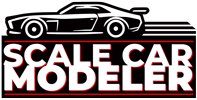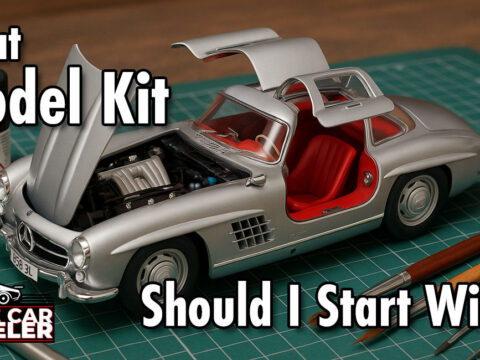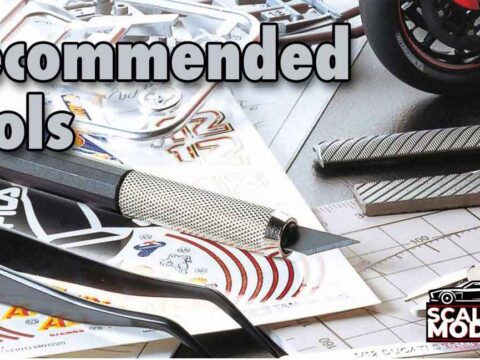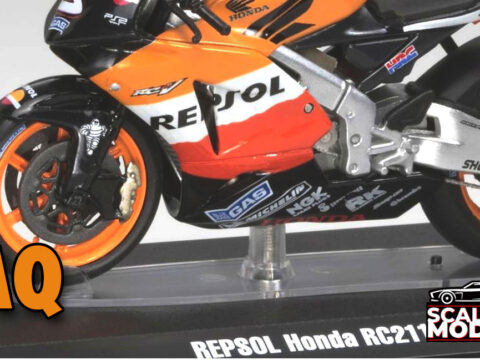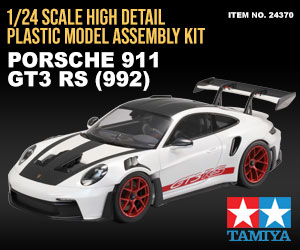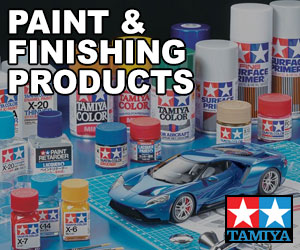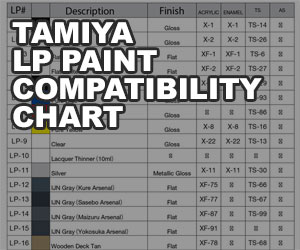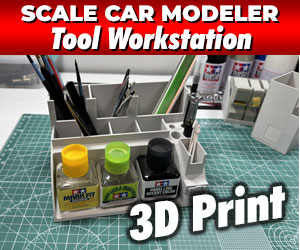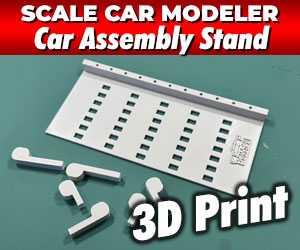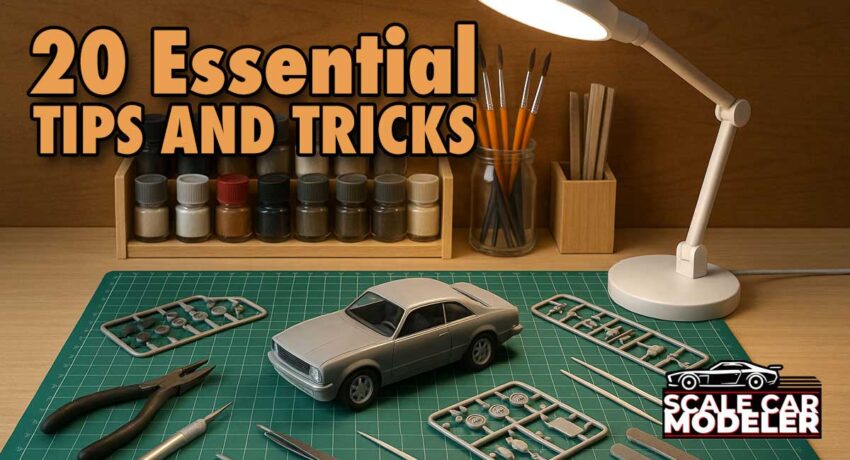
If you're just starting out (or have decided to brush up on your skills), building plastic model cars is a rewarding and creative hobby that offers hours of fun. The range of kits to build is quite massive - from classic muscle cars to modern racers - there's a model kit for everyone. But even the simplest kits can become frustrating without the right tools, techniques and knowledge.
That's where Scale Car Modeler comes in. This guide includes 20 essential tips and tricks = geared primarily toward beginners - to help you get started with confidence and grow your skills. Plus, we’ve added a few intermediate and advanced pointers so you know what’s possible as you level up.
Beginner Model Building Tips
1. Start with a Simple Kit
If you’re new to the hobby, avoid complex multi-piece kits with engines and tiny photo-etched parts. Look for snap-together or curbside kits (those without detailed engines) in 1/24 or 1/25 scale. Brands like Revell, AMT and Tamiya offer beginner-friendly kits that still look great when completed. Check out our article on What Model and Skill Level Should I Start With? for a more detailed look at your first kit.
2. Read the Instructions First
It’s tempting to dive in, but reading the instructions from beginning to end helps you understand the build sequence, color suggestions and any potential tricky areas. This will also give you a good insight on what parts you might want to paint prior to assembly.
3. Organize Your Workspace
A clean, well-lit workspace is essential. Use trays, small containers or tackle boxes to separate parts. Having a dedicated space also helps you focus and prevents parts from getting lost.
4. Use Side Cutters to Remove Parts
Never twist or pull pieces off the sprue. Instead, use a pair of hobby side cutters to clip them cleanly. Our tools article, Tools You’ll Need To Build A Plastic Model Kit, gives more info on side cutters as well as other recommended tools.
5. Clean Up Parting Lines and Sprue Marks
Every plastic part has a mold seam (called a parting line) and connection points (called gates) from the sprue. Use a hobby knife or fine sandpaper (600–1000 grit) to gently smooth these out to achieve a clean look.
6. Test-Fit Before You Glue
Always dry-fit parts before committing to glue. This lets you see how parts align and ensures everything fits snugly, especially for body panels or chassis parts.
7. Use the Right Type of Glue
Plastic cement melts the surfaces slightly, creating a strong bond, and is what is recommended for most assemblies. For resin parts, metal or mixed materials, use cyanoacrylate (CA or super glue). Check out our article on Model Car Glues: Choosing the Right Adhesive for the Job for more information on the different types of glues and when to use them.
8. Avoid Fingerprints on Painted Parts
Believe it or not, oils from your fingers can ruin a paint job (ask me how I know...). Use tweezers or gloves when handling freshly painted parts to preserve that smooth finish.
9. Prime Before You Paint
A coat of primer helps paint adhere better and highlights imperfections like scratches or gaps. Use gray for general work, white for lighter top colors and black for metallic finishes. Want more info on paints? Well, we have an article for that as well - All About Painting.
10. Thin Your Paints (Even Acrylics)
Thick paint results in brush strokes or clogged airbrushes. Always follow manufacturer instructions for thinning, whether you're using water, thinner or flow improvers.
11. Be Patient with Paint Curing
Allow your paint to fully cure, especially when using enamels or lacquers. Rushing the process can result in fingerprints, smudges or lifting when you mask over paint. Trust me when I say this is an important one. We all get impatient during a build (especially when it's almost done), but waiting an extra day(ish) for your paint to fully dry can make a big difference in the final result.
12. Use Decal Solutions for a Pro Finish
Decals can look like stickers if not properly applied. Use Tamiya's Mark Fit Decal Solution to help with adhesion and to soften the decal so it conforms to curves and panel lines.
Intermediate Model Building Tips
13. Use Proper Masking Techniques
For two-tone or multi-color paint jobs, use hobby masking tape (like Tamiya) to avoid paint bleeding. Poster putty or masking putty works well for soft curves and camouflage patterns.
• Tamiya 6mm Masking Tape
• Tamiya 10mm Masking Tape
• Tamiya 18mm Masking Tape
14. Paint Small Details Before Assembly
Parts like seats, dashboards and engines are much easier to paint before being glued in place. Use masking or alligator clips to hold small pieces while painting and remember - let the paint fully cure before assembly!
15. Use Alligator Clips and Holders
Painting small parts can be tricky. Skewers with clips or foam blocks with pins can hold pieces upright for spraying, preventing smudges or overspray.
16. Polish and Wax the Body
After your clear coat on the body has fully cured, use polishing compounds followed by hobby wax to bring out a realistic, showroom-quality shine.
Advanced Model Building Tips
17. Add Photo-Etched Details
Photo-etched parts, like brake rotors, grilles and emblems, add ultra-realistic touches. These can be tricky to work with but add a professional touch to your models. There are plenty of aftermarket photo-etched suppliers out there. Check out our Resources page for more info.
18. Use Bare Metal Foil for Chrome Trim
Want realistic chrome? Bare Metal Foil can be burnished onto trim, handles and emblems to give that true metal finish—perfect for vintage vehicles. They are additional versions as well, like Bare Metal Foil Black or Bare Metal Foil Matte Aluminum for those that want to give your ride a completely different look!
19. Weather for Realism
Adding weathering to your model can make it look used and authentic. Use washes, dry brushing and weathering powders to replicate dirt, rust and grime — especially for race cars and beaters.
20. Try Kit-bashing and Conversions
Once you’re comfortable with stock kits, try combining parts from multiple models to create your own custom build. Many experienced builders enjoy scratch-building details or converting vehicles into different variants. Here's where you can let your imagination (and build skills) go wild!!!
Final Thoughts
Plastic model car building is a hobby where the learning never stops. Working on that perfect box-stock build or some wild creative custom, each kit teaches you something new. As a beginner, start simple, take your time and don’t be afraid to make mistakes — that’s how experts started before being an expert!
With practice and patience, your skills will evolve from basic to brilliant. And remember: it’s not just about the final result — it’s about the journey, too.
Happy modeling
